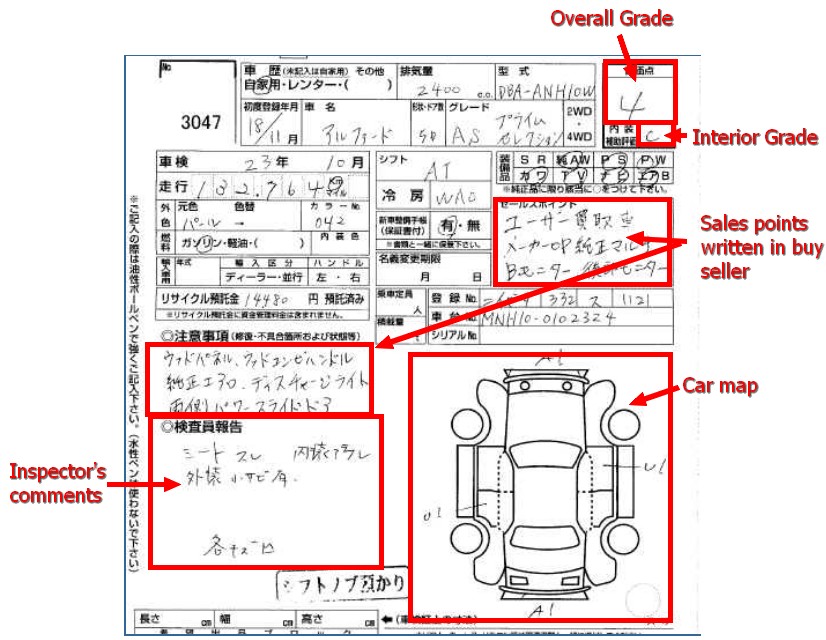Originally published at: https://www.pakwheels.com/blog/here-is-what-your-japan-import-cars-auction-sheet-grades-mean-in-pakistan/
Cars imported from Japan have an auction sheet grade, and you could have heard car dealers linking the term 'GRADE' with Japanese cars. Have you ever wondered what does grade means when it comes to Japanese cars? Why do buyers emphasize on inquiring the grade of these cars before finalizing a deal? On what basis is a Japanese car graded? Which grade car should you look for? How can you verify these grades?
Let me answer all your doubts and ambiguities in this guide. Further useful information and details regarding Japanese/reconditioned cars can are in our 'Japanese car buying guide'.
Click here for Japan Auction Sheet Verification Section
A Brief Explanation about Auction Sheet Grades:
First of all, let me explain the concept of grades. The authorities sent Japanese cars to auction houses, as the auction on a specific bid commences before the export. Auction houses grade the car mostly on the standards defined by the Japanese Automotive Standards Organization (JSO).
The official graded these cars primarily based on its mileage, interior, and exterior condition. The top right corner of the auction sheet shows the auction grade. A non-fabricated grade helps you evaluate the status of a car inside out. The concerned authorities give the following grades to the car after a detailed inspection.
Grade S:
• S grade cars rarely come in for auction.
• A car gets S grade, which is less than 1-year-old from the date of first registration.
• The entire car is as good as new.
• Exterior and interior of the vehicle are spotless.
• No signs of wear, repair, or corrosion.
Grade 6:
• Vehicle falls in grade 6 category when it exceeds a lifespan of 1 year, and the mileage lies between 10,000 to 30,000 km.
• The car is in immaculate condition from all aspects.
• No repair work has been done with the engine or body.
• These are old model cars with low mileage but an immaculate condition.
Grade 5:
• Grade 5 car has a mileage of less than 50,000 km.
• Interior or exterior of a vehicle may contain minor scratches or dents that are quite hard to notice.
• No signs of repair with the engine or body.
Grade 4.5:
• The grade vehicle is with the original mileage of less than 100,000 km is marked as a 4.5-grade car.
• The machine may contain minute scratches or dents with a negligible amount of body repair work.
• No repair work with the engine has been done.
• One of the most desirable grades after grade 5 and 6.
Grade 4:
• Vehicle under this grade is less than 150,000 km in mileage.
• The body may have some little scratches and dents.
• The overall condition of the car is good.
• The dashboard, door panels, or seats may contain some stains, scratches, or imperfections.
• Grade 4 cars were high in demand under five years' import policy of vehicles.
Grade 3.5:
• The body of the car has few noticeable scratches, dents or repair markets.
• Some minor body repair work may be required.
• The mileage of the car is between 150,000 - 200,000 km.
• The interior may contain some stains, cigarette burn marks, color fades or scratches.
• No history of a major accident or crash.
Grade 3:
• The exterior contains some good amount of scratches, dents and repair marks.
• Interior also contains many scuffs, color fades, stains, and imperfections.
• Both the interior and exterior may require repairing or replacement.
• The engine may not be in its perfect condition as well.
Grade 2:
• Grade 2 vehicle has undergone some non-accidental damage or major transformation.
• It may not have its genuine engine.
• The machine may have a secondary component installed aftermarket like turbo or manual transmission converted into an automatic transmission.
• The car may have signs of corrosion or rust.
Grade RA:
• This specific car may have undergone average accidental damage and had been repaired.
• RA grade has nothing to do with the age or mileage of the vehicle.
• It may be less than three months old and assigned an RA grade due to accidental damage.
Grade R:
• The Grade R car has met a major accident.
• One or more major body parts require immediate replacement.
• The engine may also not be in working condition due to accidental damage.
Categorization of Grades:
Preferring one grade to another is a real tough job. All grades have some pros and cons to be considered. Cars with grade 6, 5 and 4.5 are expensive but worth buying.
Meanwhile, Grade 4 cars are budget-friendly but with few imperfections with the body. These have the highest demand due to their affordability. Generally, customers prefer cars with RA grade having low mileage over cars with grade 2 or 3. They cost less due to depreciation caused by repair work.

Being citizens of Pakistan, we have some genius brains to fabricate the original Auction grade by producing a fake auction sheet. My next article in 'Imported car buying guide' will help you verify your auction grade and auction sheet through the online process.